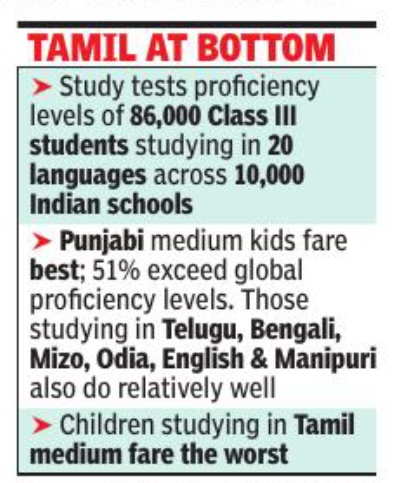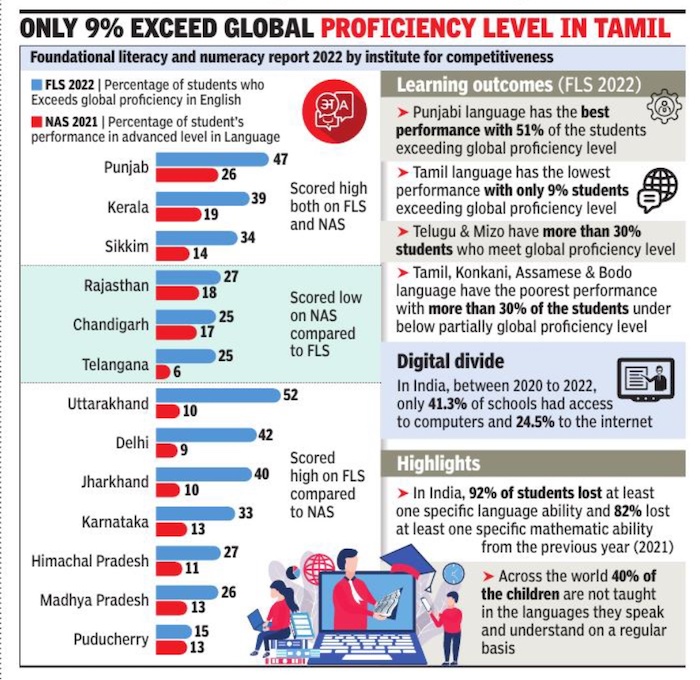Regional languages: India
This is a collection of articles archived for the excellence of their content. |
Contents |
Endangered Languages
As in 2015

See graphic, Listed endangered languages in India
May 27 2015
With 196 of its languages listed as endangered, India, a nation with great linguistic diversity, tops the UNESCO's list of countries having maximum number of dialects on the verge of extinction.India is closely followed by the US which stands to lose 192 languages and Indonesia, where 147 are in peril.
Government rules
Insurance policies in ‘vernacular’ languages
No need for insurance policies in vernacular languages: Court
TNN | Jan 26, 2015 The Times of India
CHENNAI: The Madras high court has declined to direct insurance companies to print the terms and conditions of their policies in vernacular languages, so people unable to read and write English and Hindi can understand the clauses governing claims.
The first bench of Chief Justice Sanjay Kishan Kaul and Justice M M Sundresh rejected a PIL by mason R Ayyanar saying, "It is not possible for this court to modify the terms of the policy... It is not the case of the petitioner that he had approached an insurance company for a copy of the insurance cover in a vernacular language as he did not understand the terms of the policy, which were in English."
According to advocate V S Suresh, Ayyanar, who had taken a life insurance policy from National Insurance Company, suffered injuries in a road accident caused by cattle. He was admitted to hospital and he incurred medical expenses of 1.5 lakh, with at least another 75,000 as possible future expenses.
His claims, however, were rejected by the insurance company on the grounds that he did not have personal accident cover. Noting that Ayyanar would have paid premium, which is a little more than the policy premium, for personal accident cover as well, Suresh said the insurance company had neither explained the terms of the policy to him nor given him the terms and conditions in writing in Tamil.
The PIL sought three things: one, it wanted the court to ask insurance companies to print their policy terms in bigger, readable format; two, they should be printed in vernacular languages, for the benefit of people unable to read and write in Hindi and English; and three, the company should be directed to reimburse his medical expenses.
Refusing to issue any orders in this regard, the bench said the petitioner was not in the habit of signing documents in languages he did not understand. Also, the policy does not cover medical treatment of the owner of a vehicle involved in an accident as it is not a mediclaim policy.
"The owner and driver are provided personal accident cover, only in case of death or disability," it said, dismissing the PIL.
Medium of instruction, Regional languages as
Global proficiency level and regional languages/ 2022
February 25, 2023: The Times of India

From: February 25, 2023: The Times of India

From: February 25, 2023: The Times of India
New Delhi : In foundational literacy, children with Punjabi as medium of instruction were found to have the best performance among Indian languages, with 51% of students exceeding global proficiency level and 6% below partially global proficiency level, as per a survey by Stanford University’s Institute for Competitiveness, reports Manash Gohain. On the other hand, those studying in Tamil had the lowest performance with only 9% of students exceeding global proficiency level and 48% students below partially global proficiency level. The survey found that 30% of students studying in six languages in India exceeded the global minimum proficiency level — Bengali, Mizo, Odia, English and Manipuri, besides Punjabi. For Telugu medium, 30% of students met global proficiency level.
Details
Manash Gohain, February 25, 2023: The Times of India
New Delhi : Around 42% of students surveyed across India met global minimum proficiency while 37% partially met it in mathematics, reveals a study by Stanford University’s Institute for Competitiveness.
The survey, conducted on 86,000 Class III students in 20 different languages across 10,000 schools in India, specifically highlighted language as being vital in acquiring early literacy. The report, “Second State of Foundational Literacy and Numeracy 2022”, was released on Friday by Bibek Debroy, chairman, Economic Advisory Council to the Prime Minister. It said 250 million Indian students were affected adversely due to the pandemic and that recovering from the children’s learning loss during the pandemic re-quired more effort than simply reopening classrooms.
The Global Proficiency Frameworks (GPF) developed by United States Agency for International Development (USAID) defines the minimum proficiency levels for both reading and mathematics. The global proficiency levels include “does not meet minimum proficiency”, where learners lack the most basic knowledge and skills; “partially meets minimum proficiency”, where learners have limited knowledge and skills; “meets minimum proficiency”, where learners have developed sufficient knowledge and skills, and “exceeds minimum proficiency” means that learners have developed superior knowledge and skills and can successfully complete complextasks. According to UNICEF, nearly two-thirds of 10-yearolds globally are unable to read and understand a sim-ple text. With the Covid pandemic situation, the learning loss worsened, and every child across the world has fallen behind in learning.
Commenting on the current state of foundational learning and literacy, the report stated that in the contemporary world, in many countries, most children cannot interpret basic words and perform simple operations with numbers. According to a World Bank assessment, in India, around 50% of children lack foundational learning.
The report, however, says by adopting suitable innovation and agency demonstrated by teachers, collaborating with parents and using experiments with technology, the learning loss can be mitigated. In the last 50 years, India has lost over 220 languages, which means not enough attention is paid to preserving and taking care of languages.